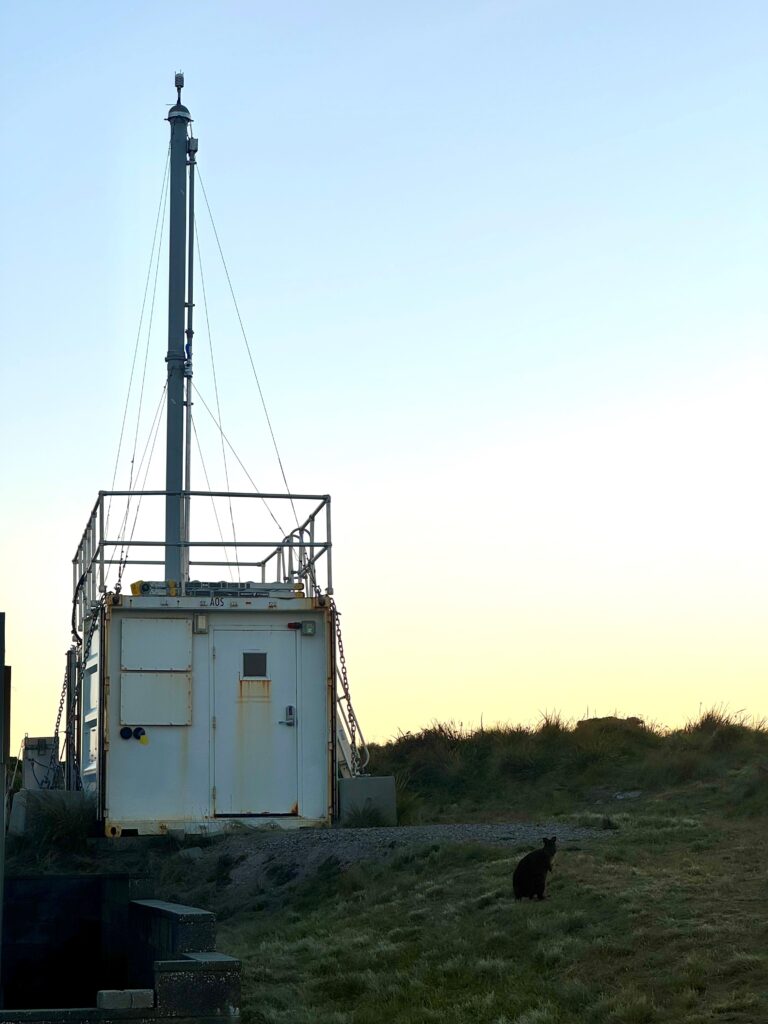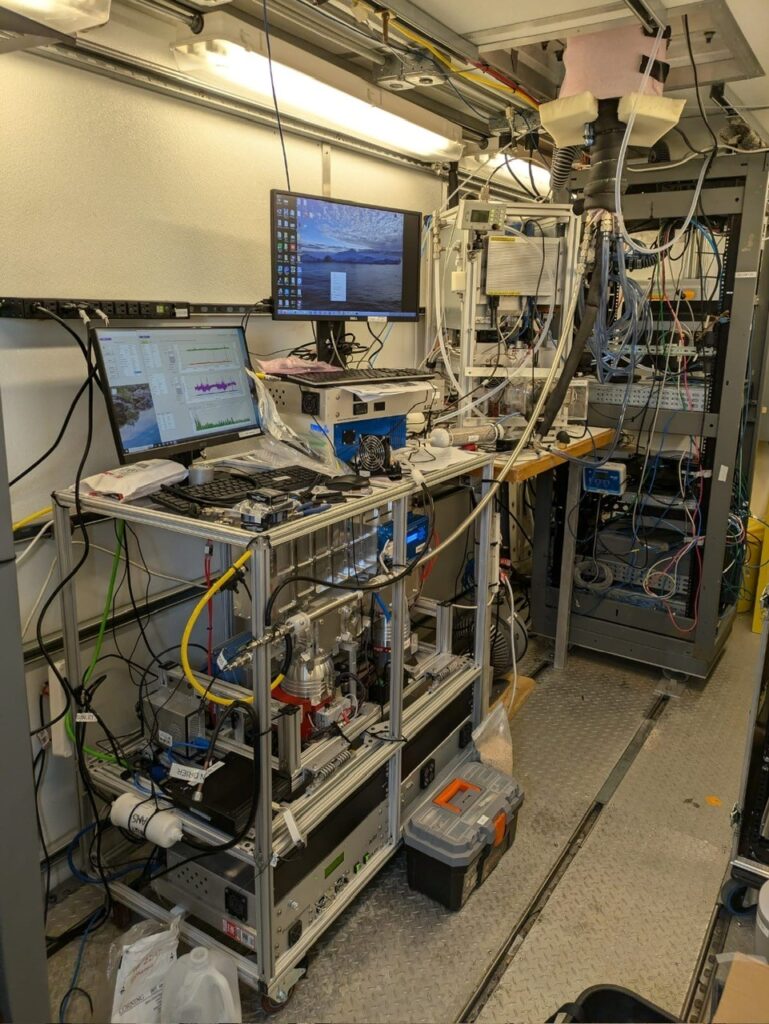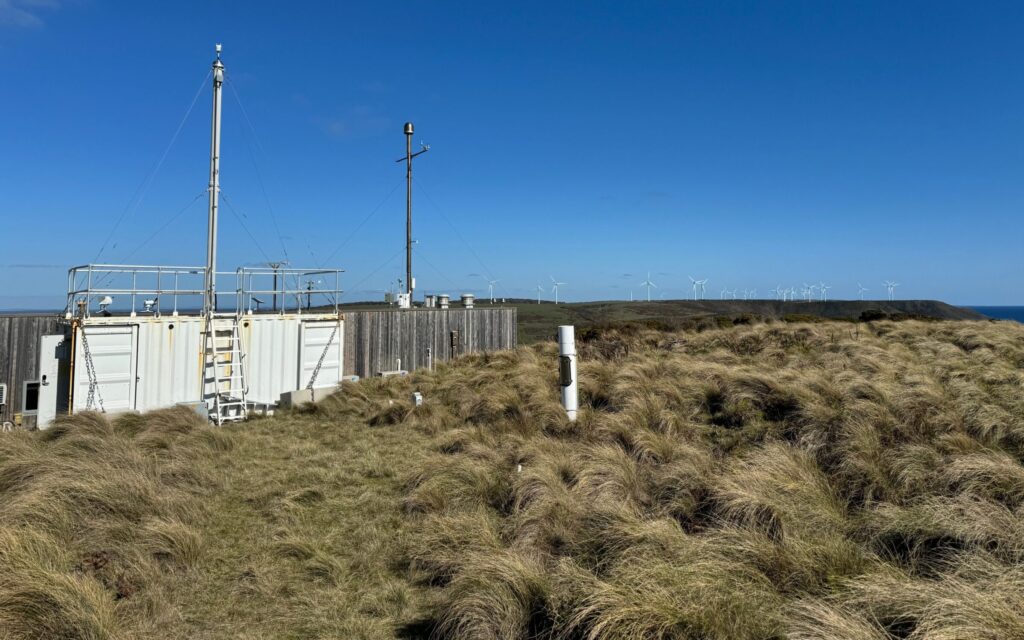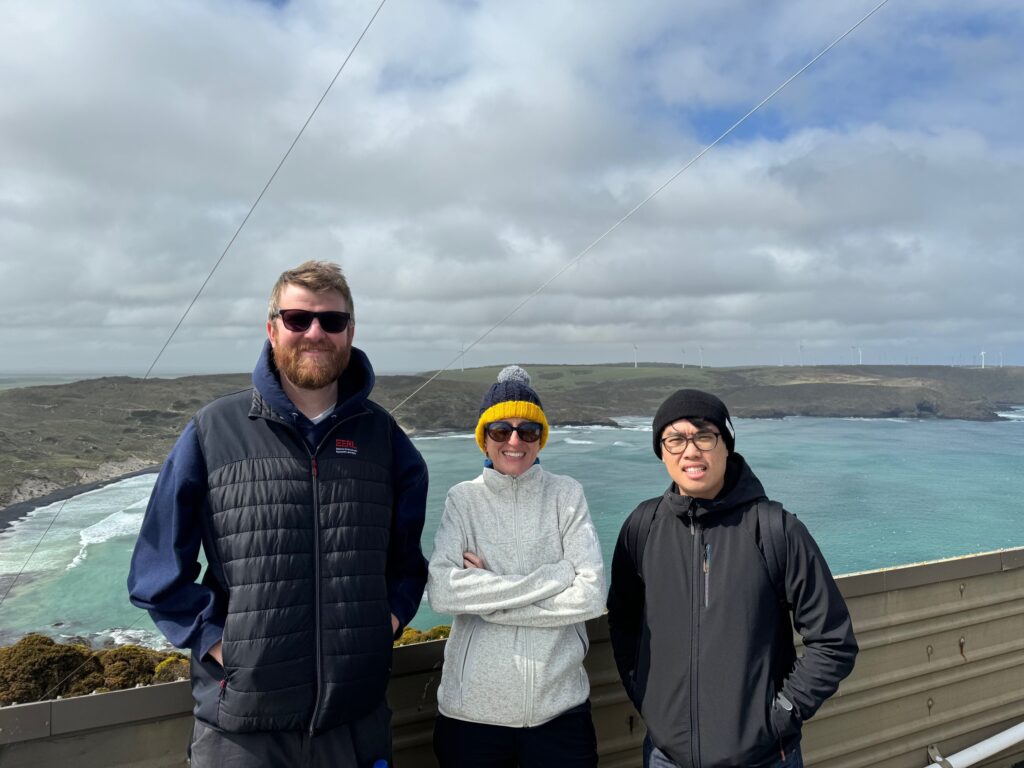CAPE-k_Chem measurement campaign: Properties and sources of Southern Ocean aerosols
Production of aerosol particles in the marine environment occurs primarily via 2 pathways: 1) wave breaking and bubble bursting, which results in primary particles composed mainly of sea salt and biogenic organic matter, and 2) sea-air exchange of gaseous compounds produced by marine biota (phytoplankton, algae), in particular dimethyl sulphide (DMS), and the subsequent secondary particle formation from oxidation of these gaseous precursors. Aerosols from these two different sources will have different composition, size and number concentration, and, therefore different ability to act as a CCN. Knowing spatial and temporal impact of these sources on the total aerosol composition and thus CCN properties is vital in attributing climate impacts to biogenic sources versus wind and bubble bursting produced sea-salt aerosol.
Since Oct 2024 we’ve been conducting continuous measurements at kennaook/Cape Grim (kCG) Basline air Pollution Station (Tasmania) as a part of a larger 18 months long CAPE-k measurement campaign logistically supported by the US Department of Energy.
With CAPE-k_Chem we expand the scope of CAPE-k measurements to include aerosol size-resolved chemical composition, low volatility vapours (aerosols precursors) and particle size from 2 to 40 nm (relevant new particle formation). This will be achieved by deploying:
1. High Resolution Time of Flight Aerosol Mass Spectrometer (HR-ToF-AMS) for measuring real-time size-dependent composition (organics, sulfate, nitrate, chloride, ammonium ions) of aerosols.
2. Nitrate-Chemical Ionisation Mass Spectrometer (Nitrate-CIMS) for measuring in real-time gaseous sulfuric, methanesulfonic (MSA) and iodic acid (+ highly oxygenated organic compounds). All these species are important for new particle formation and for growth of aerosol particles by condensation.
3. Neutral cluster and Air Ion Spectrometer (NAIS) that measures the mobility distribution of ions and neutral particles from 0.8 to 40 nm and it is used to identify new particle formation events.
This research is funded by the Australian Research Council (ARC Discovery funding scheme, grant number: DP240100389) and logistically supported by the US Department of Energy’s Atmospheric Radiation Measurement (ARM) User Facility.



